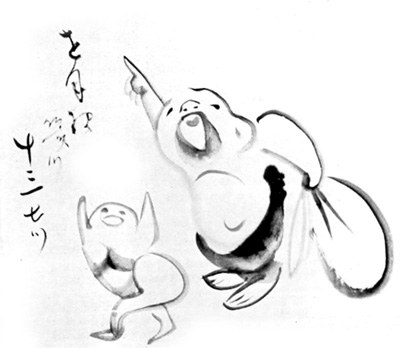Teaching
Remembering An Attitude Of Gratitude – A Holy Encounter ~ Ron’s Memoirs
“The deeds you do may be the only sermon some persons will hear today”
~ St. Francis Of Assisi
“I’ve learned that people will forget what you said,
people will forget what you did,
but people will never forget how you made them feel.”
~ Maya Angelou
“If you could only sense how important you are to the lives of those you meet; how important you can be to the people you may never even dream of.
There is something of yourself that you leave at every meeting with another person.”
~ Fred Rogers
“When you meet anyone, remember it is a holy encounter.
As you see him, you will see yourself. As you treat him, you will treat yourself.
As you think of him, you will think of yourself.
Never forget this, for in him you will find yourself or lose sight of yourself.”
~ A Course in Miracles (ACIM)
“We are born and reborn countless number of times,
and it is possible that each being has been our parent at one time or another.
Therefore, it is likely that all beings in this universe have familial connections.”
~ H. H. Dalai Lama, from ‘The Path to Tranquility: Daily Wisdom”.
In this world of relativity, we are all relatives.
~ Ron Rattner, Sutra Sayings
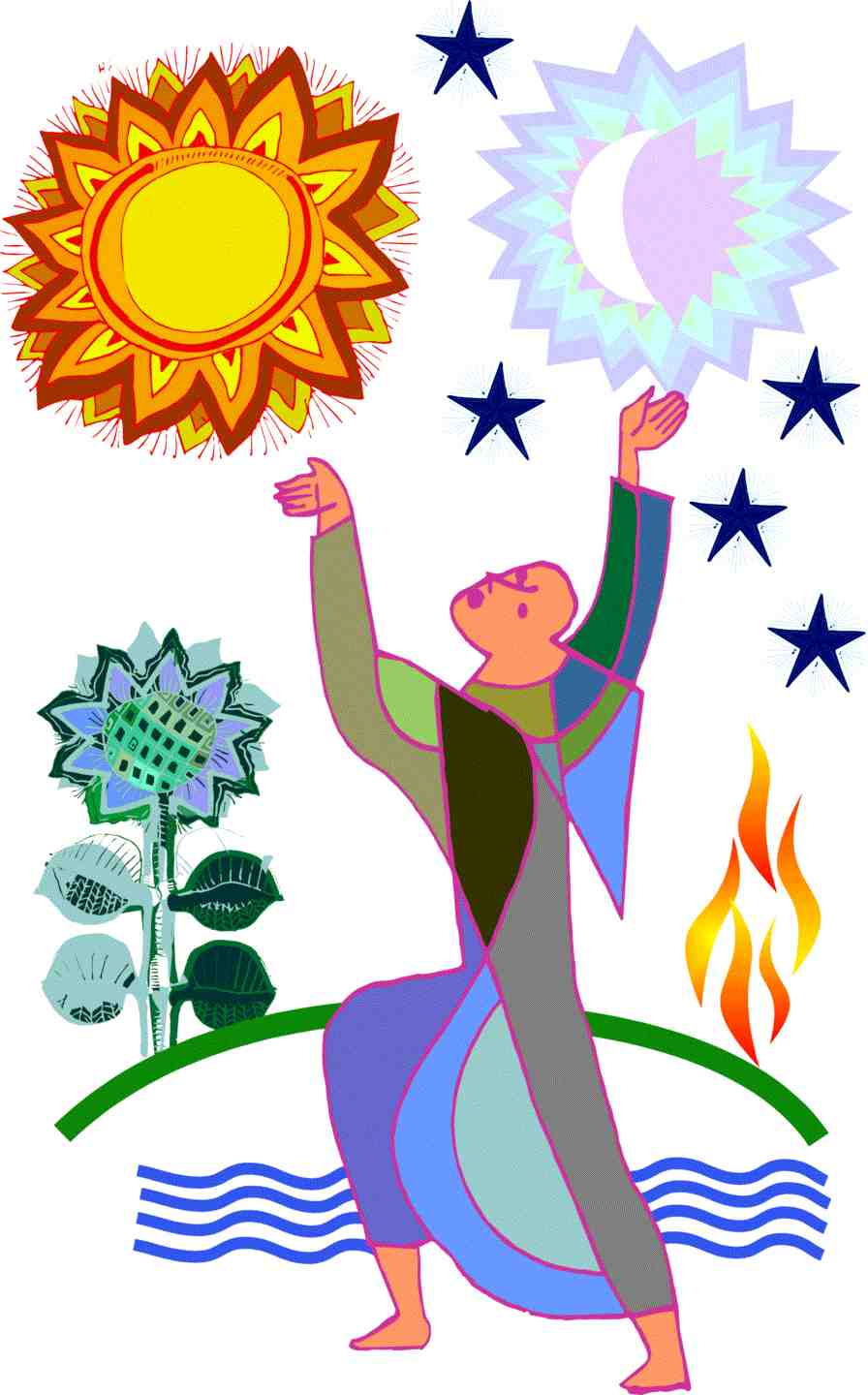
Introduction.
In the prior memoirs chapter “Another ‘Near Death’ Experience?”, I told of my miraculous survival and healing from critical taxicab rundown injuries, which I have attributed to the prayers, care, and good wishes of saints and many others who wanted me to get well. And I explained how the shock and trauma of my sudden injuries left me with continuing retrograde amnesia, without memory of what happened immediately before and after the taxicab incident, and while I was comatose.
In this chapter I will recount how a spontaneous act of loving-kindness by an ICU nurse – who synchronistically shared my reverence for Saint Francis of Assisi – proved an unforgettable healing blessing. I cannot remember the nurse’s name (so I’ll call her “Mary”), but my memory of our meeting was rekindled by an unforgettable document she left while I slept the next day; and I will never forget how I’ve felt because of her kindness.
A Holy Encounter.
For many years I have had frequent synchronistic meetings with strangers with whom I have experienced deeply harmonious connections. I have called them “holy encounters”. This is the story of an especially memorable holy encounter with a compassionate nurse which happened at the San Francisco General Hospital Intensive Care Unit [ICU], shortly after I had been run down and critically injured by a taxicab.
I have no memory of my admission to the ICU or of any prior conversations, diagnostic procedures or medical examinations there, and I was unaware of details of my injuries until after this encounter.
I later learned from medical records and from those who had examined or visited me that I had sustained a traumatic bleeding brain contusion and concussion, with extended loss of consciousness; large 2” chronic subdural hematoma pushing brain out of normal alignment; multiple fractures, including multiple facial fractures, bruises and lacerations; a fractured right leg tibial plateau; and various traumatic internal injuries, including a lacerated and bleeding liver. I was told that my head and face were completely bruised, discolored and swollen.
On the morning of this holy encounter I can now remember awakening supine on my hospital bed unable to rotate my body because of an IV tube and a full leg brace on my right leg. Presumably I was under influence of narcotic pain suppressant drugs which had been administered while I was unconscious, and until I was later able to decline them with informed consent.
Soon after I awakened that morning, I was greeted by a lovely slender, blond haired ICU nurse, who said:
“Good morning Mr. Rattner, I’m Mary your nurse for today.
How are you feeling?”
Amazingly, I simply responded:
“I’m grateful to be alive!”
Surprised, Mary commented appreciatively about my positive attitude. Whereupon I promptly recited for her my Silly Sutras saying that:
“An attitude of gratitude brings beatitude.”
And I explained to Mary that my attitude of gratitude came from abiding faith in Divine Providence, and conviction that I was blessed by Saint Francis of Assisi and other saints [*See Footnote]. Mary then told me that she had been raised to revere Saint Francis by her mother who regularly prayed to him at a home shrine.
Inspired by this wonderful synchronicity, I gladly recited for Mary the
“make me an instrument of Thy peace” prayer associated with Saint Francis, which amazingly I readily remembered, and which apparently she deeply appreciated. We talked briefly and she then proceeded on her rounds.
An unforgettable “get well” message.
The day after our ‘holy encounter’, I awakened to discover that while I slept Mary had placed this “get well” message, with the peace prayer of Saint Francis of Assisi, next to my bed.
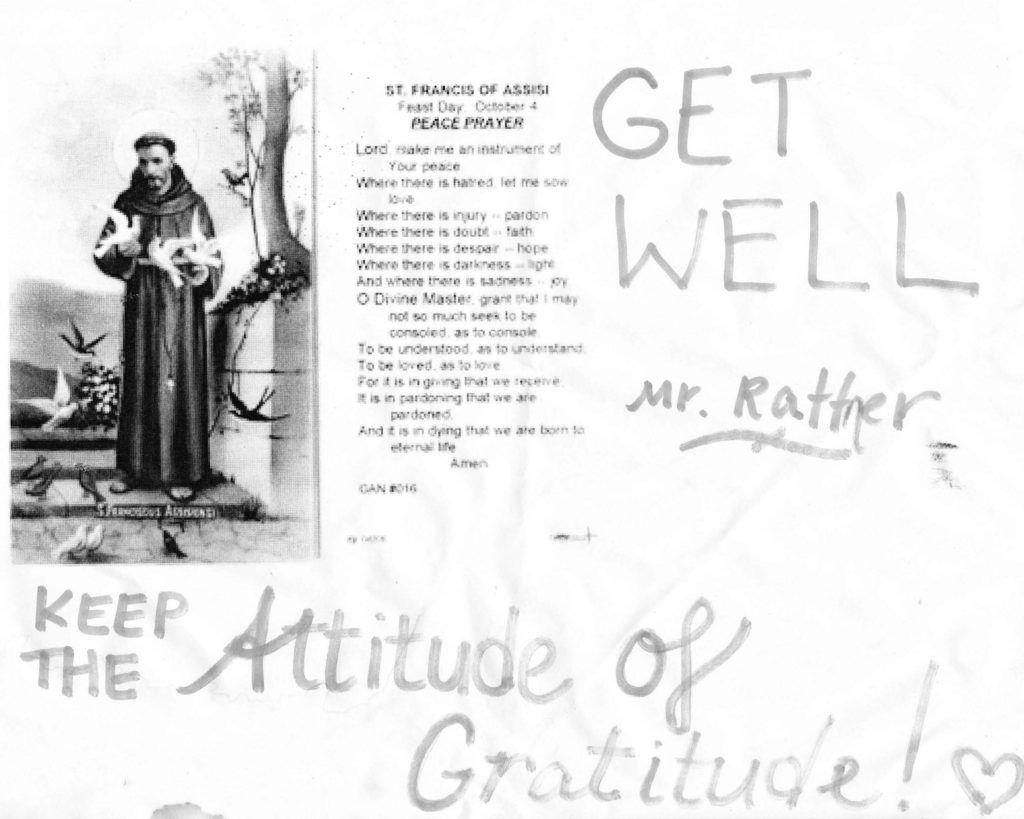
Conclusion.
I have heretofore told how my mid-life spiritual epiphany opened an emotional flood-gate which had been closed since childhood, and unleashed for the first time in my adult life an intense and unprecedented torrent of tears; how for many years I cried so often and so profusely that I came to realize that I was experiencing a great transformative blessing recognized in various devotional spiritual traditions, and which in the Catholic tradition of St. Ignatius of Loyola and St. Francis of Assisi was known as “the gift of tears”.
Though never a frequent flyer, I became – and for over forty years have remained – a very frequent crier. Tears have helped purify my psyche, body and nervous system permitting ‘peek experiences’ of higher states of consciousness, as well as many experiences of extreme ecstasy. They have become for me a divine sign of an opened heart.
Mary’s ‘get well’ message has consistently and often sparked a flood of heartfelt emotions and tears as it reminds me of our holy encounter and of my attitude of gratitude for this precious human lifetime. Thus, many times while writing this story I have cried with heartfelt gratitude.
Moral of the story.
Every spontaneous and heartfelt act of loving-kindness bestowed in ordinary life – even in seemingly insignificant incidents – can prove a lasting blessing for its recipient and everyone everywhere.
And so may it be!
Ron Rattner

Footnote
* Saint Francis of Assisi.
Shortly after a profound spiritual opening in 1976, I began having synchronistic inner and outer experiences concerning Saint Francis of Assisi, of whom I was previously ignorant. Because of those experiences I developed deep affinity with this legendary saint, and regarded him an archetype to be emulated. Soon I began multiple daily recitations of the “make me an instrument of Thy peace” prayer associated with him, which have continued until now.
On retirement from legal practice in 1992, I made a pilgrimage to Italy to honor Saint Francis. In spring 1992, I journeyed to the Umbrian town of Assisi, Italy, where Saint Francis (‘Francesco’) was born and resided for most of his inspiring life, and where I experienced an extraordinary feeling of déjà vu, and some of the most memorable spiritual experiences of this lifetime. Also I made a magically memorable excursion to Mount La Verna in Tuscany – where Francis became the first Christian saint to receive the crucifixion stigmata of Christ. (See https://sillysutras.com/pilgrimage-to-assisi-communing-with-saint-francis-rons-memoirs/)
Surrender: Rumi
~ Quotes & Poem
“How did you get here?
Close your eyes and surrender.”
“The hurt that we embrace becomes joy.”
“There is no reality but God,
says the completely surrendered sheik,
who is an ocean for all beings.”
~ Rumi

“Surrender” ~ Rumi
Joseph is back.
And if you don’t feel in yourself
the freshness of Joseph,
be Jacob.
Weep, and then smile.
Do not pretend to know something
you have not experienced.
There is a necessary dying,
and then Jesus is breathing again.
Very little grows on jagged rock.
Be ground. Be crumbled,
so wildflowers will come up
where you are.
You have been stony for too many years.
Try something different.
Surrender.
Translation: Coleman Barks
Eckhart Tolle ~ Spiritual Awakening Story and Teachings
“In essence there is and always has been only one spiritual teaching,
although it comes in many forms.”
~ Eckhart Tolle – The Power of Now
“A true spiritual teacher does not have anything to teach in the conventional sense of the word, does not have anything to give or add to you, such as new information, beliefs, or rules of conduct. The only function of such a teacher is to help you remove that which separates you from the truth …
The words are no more than signposts.”
~ Eckhart Tolle – Stillness Speaks
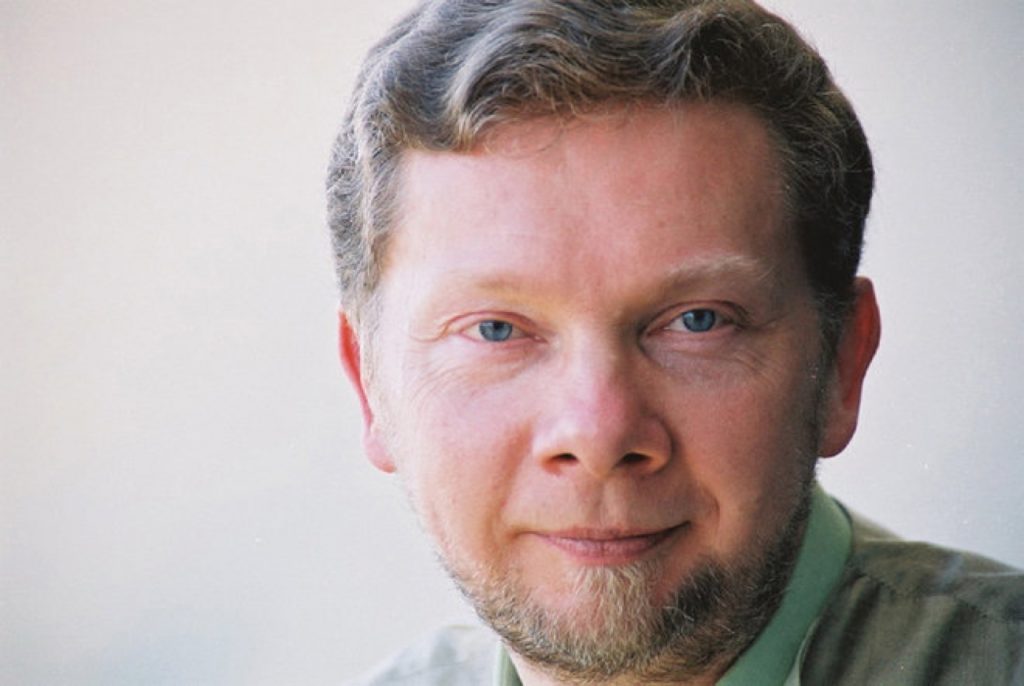
Eckhart Tolle.
Ron’s Introduction.
Eckhart Tolle is an influential contemporary spiritual writer and teacher, whose teachings have reached millions worldwide. On the brink of suicide, at age 29 Tolle had a miraculous spiritual awakening which ended his lifelong psychological sufferings and suicidal thoughts, rather than his precious human life. Thereafter he synchronistically became renowned as a spiritual teacher and author of The Power of Now and other noteworthy books.
I first discovered Tolle only after I had transitioned from a “born again Hindu” life phase to becoming an “uncertain Undo” – relying on inner rather than outer authority. (see e.g. “I’ve Found A Faith-Based Life”)
By then, I understood and appreciated the authenticity of Tolle’s spiritual awakening story, and the cogency of his teachings, which are now often quoted on SillySutras.com.
Tolle’s transformative epiphany was triggered by the profoundly simple insight that he wasn’t his constant negative thoughts, but the timeless awareness/witness and matrix of those thoughts.
Especially in this age of mental malaise when countless millions of people suffer from deep despondency and depression, and suicides are rife, Eckhart Tolle’s inspiring near-suicide spiritual awakening story can help those of us feeling despondent or psychologically challenged find inner peace by self-identifying as eternal universal awareness, rather than ego-mind’s “voice in the head”.
So Eckhart Tolle’s history and authentic awakening story are posted below to help inspire our crucially important Self discovery that we are eternal awareness; not mere mortal entities suffering from mistaken ego-mind self identification. And I enthusiastically encourage deep reflection upon it.
Tolle’s History of Anxiety, Fear and Depression Before His Spiritual Awakening.
Tölle was born on February 16, 1948 in Lünen, a small German town near Dortmund in the Ruhr Valley. He grew up in a dysfunctional household, where his incompatible Catholic parents were constantly bickering. Tölle’s early childhood was fraught with anxiety and fear, and he felt alienated from a perceived hostile school environment. Sometimes instead of going to school he would bicycle to the woods and sit amidst nature, which he loved.
Eventually his parents separated, and his father left Germany to live in Spain. Later, at the age of thirteen, Tölle moved to Spain to live with his father. In Spain, Tölle refused to go to school any longer. Though not rebellious he could no longer tolerate a hostile school environment. Tolle’s unconventional ‘open minded’ father did not insist that his son attend high school, and permitted him to elect home studies of literature, astronomy and various languages.
At the age fifteen, Tolle synchronistically received and read several books written by a German mystic known as Bô Yin Râ, which “very deeply” affected him. With an aptitude for languages, he quickly learned Spanish, English, and some French. Still, he spent much solitary time, free of the external pressures of the environment or the culture.
At age nineteen, about ten years before his “inner awakening”, Tölle moved to England, where he lived for about thirty years until emigrating to Canada in the mid-1990’s. During his first three years in England, he had no formal education, and supported himself by teaching German and Spanish at a London school for language studies.
Then, troubled by “depression, anxiety and fear”, he began “searching for answers” which he believed he could find only through intellect rather than intuition.
In his early twenties, Tolle decided to pursue his search by studying philosophy, psychology, and literature. After taking preparatory evening classes, he was ‘fast-tracked’ and permitted to enroll in the University of London. Upon graduating, he was offered and accepted a scholarship to do postgraduate research. Soon thereafter, at age twenty nine, he experienced a profound spiritual awakening and dropped out of academic studies.

Tolle’s Spiritual Awakening Story.
(Excerpted from The Power of Now: A Guide To Spiritual Enlightenment )
Until my thirtieth year, I lived in a state of almost continuous anxiety interspersed with periods of suicidal depression. It feels now as if I am talking about some past lifetime or somebody else’s life.
One night not long after my twenty-ninth birthday, I woke up in the early hours with a feeling of absolute dread. I had woken up with such a feeling many times before, but this time it was more intense than it had ever been. The silence of the night, the vague outlines of the furniture in the dark room, the distant noise of a passing train – everything felt so alien, so hostile, and so utterly meaningless that it created in me a deep loathing of the world. The most loathsome thing of all, however, was my own existence. What was the point in continuing to live with this burden of misery? Why carry on with this continuous struggle? I could feel that a deep longing for annihilation, for nonexistence, was now becoming much stronger than the instinctive desire to continue to live.
“I cannot live with myself any longer.” This was the thought that kept repeating itself in my mind. Then suddenly I became aware of what a peculiar thought it was. `Am I one or two? If I cannot live with myself, there must be two of me: the `I’ and the `self’ that `I’ cannot live with.” “Maybe,” I thought, “only one of them is real.”
I was so stunned by this strange realization that my mind stopped. I was fully conscious, but there were no more thoughts. Then I felt drawn into what seemed like a vortex of energy. It was a slow movement at first and then accelerated. I was gripped by an intense fear, and my body started to shake. I heard the words “resist nothing,” as if spoken inside my chest. I could feel myself being sucked into a void. It felt as if the void was inside myself rather than outside. Suddenly, there was no more fear, and I let myself fall into that void. I have no recollection of what happened after that.
I was awakened by the chirping of a bird outside the window. I had never heard such a sound before. My eyes were still closed, and I saw the image of a precious diamond. Yes, if a diamond could make a sound, this is what it would be like. I Opened my eyes. The first light of dawn was filtering through the curtains. Without any thought, I felt, I knew, that there is infinitely more to light than we realize. That soft luminosity filtering through the curtains was love itself. Tears came into my eyes. I got up and walked around the room. I recognized the room, and yet I knew that I had never truly seen it before. Everything was fresh and pristine, as if it had just come into existence. I picked up things, a pencil, an empty bottle, marveling at the beauty and aliveness of it all.
That day I walked around the city in utter amazement at the miracle of life on earth, as if I had just been born into this world.
For the next five months, I lived in a state of uninterrupted deep peace and bliss. After that, it diminished somewhat in intensity, or perhaps it just seemed to because it became my natural state. I could still function in the world, although I realized that nothing I ever did could possibly add anything to what I already had.
I knew, of course, that something profoundly significant had happened to me, but I didn’t understand it at all. It wasn’t until several years later, after I had read spiritual texts and spent time with spiritual teachers, that I realized that what everybody was looking for had already happened to me. I understood that the intense pressure of suffering that night must have forced my consciousness to withdraw from its identification with the unhappy and deeply fearful self, which is ultimately a fiction of the mind. This withdrawal must have been so complete that this false, suffering self immediately collapsed, just as if a plug had been pulled out of an inflatable toy. What was left then was my true nature as the ever-present I am: consciousness in its pure state prior to identification with form. Later I also learned to go into that inner timeless and deathless realm that I had originally perceived as a void and remain fully conscious. I dwelt in states of such indescribable bliss and sacredness that even the original experience I just described pales in comparison. A time came when, for a while, I was left with nothing on the physical plane. I had no relationships, no job, no home, no socially defined identity. I spent almost two years sitting on park benches in a state of the most intense joy.
But even the most beautiful experiences come and go. More fundamental, perhaps, than any experience is the undercurrent of peace that has never left me since then. Sometimes it is very strong, almost palpable, and others can feel it too. At other times, it is somewhere in the background, like a distant melody.
Later, people would occasionally come up to me and say: “I want what you have. Can you give it to me, or show me how to get it?” And I would say: “You have it already. You just can’t feel it because your mind is making too much noise.”
Ron’s Comments.
Tolle’s profound awakening experience credibly demonstrates how our greatest fears and sufferings can hide our highest potentials, yet provide immense evolutionary opportunities – revealing that beyond our minds we can find intuitive fulfillment of our deepest aspirations for love, peace and joy, and realization of previously unimagined human potentials.
Tolle’s teachings focus on transforming self identity “from being the content of [the] mind to being the awareness in the background”. While Tolle says he experienced a permanent awakening to Self-identity as awareness, such one-time epiphanies are extremely rare. However, numerous people’s mystical awakening experiences – like mine – can trigger a gradual transformative process of evolutionary purification and ego attrition, with ever increasing benefits.
At age forty two – like Tolle – I experienced previously unimagined and transformative Self identity as universal Awareness, followed by unprecedented experiences of peace and ecstasy. But my mistaken ego-mind identity was not thereby permanently dissolved, and it kept recurring. Therefore, instead of experiencing permanent peace of mind, I have been enjoying gradual ego attrition with ever growing happiness and fulfillment. So today I am happier than ever before, but still learning and transforming.
At the time of Tolle’s awakening experience he was largely unfamiliar with spiritual texts and spiritual teachers. But after exploring such literature for several years, he concluded “that what everybody was looking for had already happened to me.” And that: “In essence there is and always has been only one spiritual teaching, although it comes in many forms.”
Intuitively I regard Tolle as authentic and well-intentioned. So I endorse his teachings as valuable and have posted them on SillySutras.com. to help others.
For example, I have especially appreciated Tolle’s humble and intriguing above introduction to his excellent second book, Stillness Speaks:
“A true spiritual teacher does not have anything to teach in the conventional sense of the word, does not have anything to give or add to you, such as new information, beliefs, or rules of conduct. The only function of such a teacher is to help you remove that which separates you from the truth … The words are no more than signposts.”
Moral of the Story and Invocation.
“Your task is not to seek for love,
but merely to seek and find all the barriers within yourself
that you have built against it.”
~ Rumi
May the foregoing stories and teachings help inspire and point the way for discovery of our true spiritual Self-identity.
May everyone, everywhere be peaceful and happy!
And so may it be!
Ron Rattner
Hsin Hsin Ming: Verses On The Faith Mind ~ by Seng-Ts’an, The Third Patriarch of Zen*
“The more you talk and think about it,
the further astray you wander from the truth.
Stop talking and thinking,
and there is nothing you will not be able to know.”
~ Seng-Ts’an, The Third Patriarch Of Zen
“My teaching is like a finger pointing to the moon.
Do not mistake the finger for the moon”
~ Thich Nhat Hanh, quoting the Buddha’s Teachings
“There’s nothing to say,
but words point the way.”
~ Ron Rattner, Sutra Sayings
HSIN HSIN MING:
VERSES ON THE FAITH MIND
![]()
by Seng-Ts’an,
The Third Patriarch of Zen*
The Great Way is not difficult
for those who have no preferences.
When love and hate are both absent
everything becomes clear and undisguised.
Make the smallest distinction, however,
and heaven and earth are set infinitely apart.If you wish to see the truth
then hold no opinions for or against anything.
To set up what you like against what you dislike
is the disease of the mind.
When the deep meaning of things is not understood,
the mind’s essential peace is disturbed to no avail.The Way is perfect like vast space
where nothing is lacking and nothing in excess.
Indeed, it is due to our choosing to accept or reject
that we do not see the true nature of things.Live neither in the entanglements of outer things,
nor in inner feelings of emptiness.
Be serene in the oneness of things and such
erroneous views will disappear by themselves.When you try to stop activity by passivity
your very effort fills you with activity.
As long as you remain in one extreme or the other
you will never know Oneness.Those who do not live in the single Way
fail in both activity and passivity,
assertion and denial.
To deny the reality of things
is to miss their reality;
To assert the emptiness of things
is to miss their reality.The more you talk and think about it,
the further astray you wander from the truth.
Stop talking and thinking,
and there is nothing you will not be able to know.To return to the root is to find meaning,
but to pursue appearances is to miss the source.
At the moment of inner enlightenment
there is a going beyond appearance and emptiness.
The changes that appear to occur in the empty world
we call real only because of our ignorance.Do not search for the truth;
only cease to cherish opinions.
do not remain in the dualistic state.
Avoid such pursuits carefully.
If there is even a trace of this and that,
of right and wrong,
the mind-essence will be lost in confusion.Although all dualities come from the One,
do not be attached even to this One.
When the mind exists undisturbed in the Way,
nothing in the world can offend.
And when a thing can no longer offend,
it ceases to exist in the old way.When no discriminating thoughts arise,
the old mind ceases to exist.
When thought objects vanish,
the thinking-subject vanishes:
As when the mind vanishes, objects vanish.Things are objects because of the subject (mind):
the mind (subject) is such because of things (object).
Understand the relativity of these two
and the basic reality: the unity of emptiness.
In this Emptiness the two are indistinguishable
and each contains in itself the whole world.
If you do not discriminate between coarse and fine
you will not be tempted to prejudice and opinion.To live in the Great Way is neither easy nor difficult.
But those with limited views are fearful and irresolute:
the faster they hurry, the slower they go.
And clinging (attachment) cannot be limited:
Even to be attached to the idea of enlightenment
is to go astray.
Just let things be in their own way
and there will be neither coming nor going.
Obey the nature of things (your own nature)
and you will walk freely and undisturbed.When the thought is in bondage the truth is hidden
for everything is murky and unclear.
And the burdensome practice of judging
brings annoyance and weariness.
What benefit can be derived
from distinctions and separations?If you wish to move in the One Way
do not dislike even the world of senses and ideas.
Indeed, to accept them fully
is identical with enlightenment.The wise man strives to no goals
but the foolish man fetters himself.There is one Dharma, not many.
Distinctions arise
from the clinging needs of the ignorant.
To seek Mind with the (discriminating) mind
is the greatest of all mistakes.Rest and unrest derive from illusion;
with enlightenment
there is no liking and disliking.
All dualities come from ignorant inference.
They are like dreams or flowers in air –
foolish to try to grasp them.
Gain and loss, right and wrong,
such thoughts must
finally be abolished at once.If the eye never sleeps,
all dreams will naturally cease.
If the mind makes no discriminations,
the ten thousand things are as they are,
of single essence.
To understand the mystery of this One-essence
is to be released from all entanglements.
When all things are seen equally
the timeless Self-essence is reached,
No comparisons or analogies are possible
in this causeless, relationless state.
Consider movement stationary
and the stationary in motion,
both movement and rest disappear.
When such dualities cease to exist
Oneness itself cannot exist.
To this ultimate finality
no law or description applies.For the unified mind in accord with the way
all self-centered striving ceases.
Doubts and irresolutions vanish
and life in true faith is possible.
With a single stroke we are freed from bondage:
Nothing clings to us and we hold to nothing.All is empty, clear, self-illuminating,
with no exertion of the mind’s power.
Here thought, feeling,
knowledge and imagination are of no value.In this world of suchness
there is neither self nor other-than-self.
To come directly into harmony with this reality
just say when doubt rises “not two”.
In this “not two” nothing is separate,
nothing is excluded.No matter when or where,
enlightenment means entering this truth.
And this truth is beyond extension
or diminution in time and space:
In it a single thought is ten thousand years.Emptiness here, emptiness there,
but the infinite universe
stands always before your eyes.
Infinitely large and infinitely small;
no difference, for definitions have vanished
and no boundaries are seen.So too with Being and non-Being.
Don’t waste time in doubts and arguments
That have nothing to do with this.One thing, all things,
move among and intermingle without distinction.
To live in this realization
is to be without anxiety about non-perfection.
To live in this faith is the road to non-duality,
because the non-dual is one with the trusting mind.Words!
The Way is beyond language,
for in it there is
no yesterday
no tomorrow
no today.
*Footnote re “
Hsin Hsin Ming”
The Hsin-Hsin Ming is a profound 6th Century non-dualistic perennial wisdom poem, first in the Ch’an (Chinese Zen) Buddhist tradition, attributed to the legendary third Zen patriarch, Seng Ts’an. Long regarded as a masterpiece by Zen practitioners, its essential non-dualistic message (influenced by Taoism) is that “When all things are seen equally the timeless Self-essence is reached. No comparisons or analogies are possible in this causeless, relationless state”. Thus any attachment, mental exertion or conceptual effort to characterize or distinguish impermanent perceptions precludes living an enlightened life – The Great Way, since words and concepts arise from illusion of duality and cannot describe timeless non-dual Truth, but merely point the way.
Skillfully translated from Chinese to English by Roshi Dr. Richard B. Clarke (1933-2013), founder and First Teacher of The Living Dharma Center near Amherst, MA. this version is available elsewhere on-line and in print. (Currently it is featured in “Teachings of the Buddha”, edited by Jack Kornfield, Shambala 2012, at pp. 143-9).
YouTube recitation of “ Hsin Hsin Ming” by Ben Bigelow:
Please Call Me by My True Names
~ Thich Nhat Hahn
My joy is like Spring, so warm
it makes flowers bloom all over the Earth.
My pain is like a river of tears,
so vast it fills the four oceans.
~ Thich Nhat Hahn
“When another person makes you suffer,
it is because he suffers deeply within himself,
and his suffering is spilling over.
He does not need punishment; he needs help.
That’s the message he is sending.”
~ Thich Nhat Hanh
Blaming has no positive effect at all, nor does trying to persuade using reason and argument. That is my experience. “No blame, no reasoning, no argument, just understanding. If you understand, and you show that you understand, you can love, and the situation will change”
~ Thich Nhat Hanh
“To understand everything is to forgive everything.”
~ Buddha
“And Jesus said,
‘Father, forgive them,
for they know not what they do.’”
~ Luke 23:34
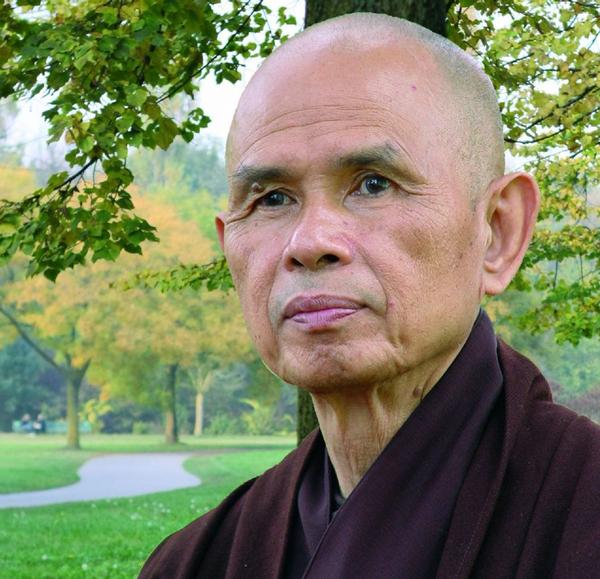
Thich Nhat Hanh
October 11, 1926 – January 22, 2022
Thich Nhat Hahn’s Introduction and Explanation.
I have a poem for you. This poem is about three of us.
The first is a twelve-year-old girl, one of the boat
people crossing the Gulf of Siam. She was raped by a
sea pirate, and after that she threw herself into the
sea.
The second person is the sea pirate, who was born
in a remote village in Thailand.
And the third person is me.
I was very angry, of course. But I could not take sides against the sea pirate. If I could have, it would have been easier, but I couldn’t. I realized that if I had been born in his village and had lived a similar life – economic, educational, and so on – it is likely that I would now be that sea pirate.
So it is not easy to take sides.
Out of suffering, I wrote this poem.
It is called “Please Call Me by My True Names,” because I have many names, and when you call me by any of them, I have to say,
“Yes.”
Please Call Me by My True Names
Don’t say that I will depart tomorrow —
even today I am still arriving.
Look deeply: every second I am arriving
to be a bud on a Spring branch,
to be a tiny bird, with still-fragile wings,
learning to sing in my new nest,
to be a caterpillar in the heart of a flower,
to be a jewel hiding itself in a stone.
I still arrive, in order to laugh and to cry,
to fear and to hope.
The rhythm of my heart is the birth and death
of all that is alive.
I am the mayfly metamorphosing
on the surface of the river.
And I am the bird
that swoops down to swallow the mayfly.
I am the frog swimming happily
in the clear water of a pond.
And I am the grass-snake
that silently feeds itself on the frog.
I am the child in Uganda, all skin and bones,
my legs as thin as bamboo sticks.
And I am the arms merchant,
selling deadly weapons to Uganda.
I am the twelve-year-old girl,
refugee on a small boat,
who throws herself into the ocean
after being raped by a sea pirate.
And I am the pirate,
my heart not yet capable
of seeing and loving.
I am a member of the politburo,
with plenty of power in my hands.
And I am the man who has to pay
his “debt of blood” to my people
dying slowly in a forced-labor camp.
My joy is like Spring, so warm
it makes flowers bloom all over the Earth.
My pain is like a river of tears,
so vast it fills the four oceans.
Please call me by my true names,
so I can hear all my cries and my laughter at once,
so I can see that my joy and pain are one.
Please call me by my true names,
so I can wake up,
and so the door of my heart
can be left open,
the door of compassion.
~ Thich Nhat Hahn
Source.
http://www.spiritualnow.com/articles/44/1/Thich-Nhat-Hahn-Poetry-Collection/Page1.html
Song Inspired by Passage From Please Call Me by My True Names.
Why Be Here Now?
~ Ron’s Memoirs
“That which is timeless is found NOW.”
~ Buddha
“Life can be found only in the present moment.
The past is gone, the future is not yet here,
and if we do not go back to ourselves in the present moment,
we cannot be in touch with life.”
~ Thich Nhat Hanh
“Always say ‘yes’ to the present moment…
Surrender to what is. Say ‘yes’ to life –
and see how life starts suddenly ..
working for you, rather than against you.”
~ Eckhart Tolle
“If I am not for myself, who will be for me?
If I am only for myself, what am I?
And if not now, when?
~ Hillel
Life is NOW
Ever NOW
Never then.
~ Ron Rattner, Sutra Sayings
Tao and Zen
are NOW,
not then.
~ Ron Rattner, Sutra Sayings
“Remember then: there is only one time that is important – Now! It is the most important time because it is the only time when we have any power.”
~ Leo Tolstoy
“I have realized that the past and future are real illusions,
that they exist in the present,
which is what there is and all there is. ”
~ Alan Watts
The only time you ever have in which to learn anything or see anything or feel anything, or express any feeling or emotion, or respond to an event, or grow, or heal, is this moment, because this is the only moment any of us ever gets. You’re only here now; you’re only alive in this moment.
~ Jon Kabat-Zinn
Freedom is found in the choiceless awareness of our daily existence and activity. Thought is time. Thought is born of experience and knowledge which are inseparable from time and the past. Time is the psychological enemy of man. Our action is based on knowledge and therefore time, so man is always a slave to the past. Thought is ever-limited and so we live in constant conflict and struggle. There is no psychological evolution.”
~ J. Krishnamurti

Why Be Here Now?
Introduction.
Today’s memoirs posting “Why Be Here Now?” explains how the memorable book title “Be Here Now” became for me an inspirational spiritual slogan, encapsulating the essence of all spiritual teachings: viz. to live in thoughtless presence (as Universal Awareness) rather than in the past (as an ego-mind story of a separate mortal being); because Life is NOW, ever NOW, never Then!
This universal teaching has so significantly advanced my spiritual awakening process, that I am now experiencing life in ways I couldn’t imagine when I first learned about being in the present moment. So I often share it to help others (as hereafter explained).
Learning to live moment by moment, ever NOW.
Here is a summary of my process of learning about living NOW, as Universal Awareness:
Soon after my midlife spiritual awakening, I attended “est”, an impactful self-help seminar, on the urging of a long-time friend. There I was first exposed to certain (unsourced) Eastern spirituality principles cleverly collected and presented by Werner Erhard, est’s founder, to motivate participants to radically transform their lives by ‘getting IT’. The key est teaching was to:
Always accept “what is”. [See Ron’s Memoirs: Getting “IT” at est]
After attending est in 1977, I started to learn that for millennia there have been spiritual teachings about thoughtlessly accepting “what is” {sometimes called “letting go” or “surrender”). This began happening when I read an extraordinary book called “Be Here Now”, which told about the spiritual transformation of Dr. Richard Alpert, Ph.D, psychologist, into Baba Ram Dass, a Western teacher of Eastern wisdom, after meeting his Hindu guru – Neem Karoli Baba.
Discussion re “Be Here Now” as Root Spiritual Teaching.
“Be Here Now” was my first memorable exposure to Hindu and other sourced Eastern spiritual teachings. It was an extraordinary book, unlike any other I’d ever before seen or read. Filled with beautiful calligraphy, art, and photos, it imaginatively presented a fascinating melange of Eastern ideas previously unknown to me, with many suggestions or ‘recipes’ for spiritual practices, some of which I later followed, though I didn’t immediately adopt any of them.
Apart from the book’s contents, its “Be Here Now!” title gradually became a memorable guide for my spiritual awakening process; a reminder to live with a quiet mind in the present moment. Gradually, I found this reminder repeated so often in other spiritual teachings and books that, ultimately, I considered it to be the root essence of all spiritual teachings. I deemed this teaching so crucial that (with poetic license) I once called it “The Sacred Secret of Life”. (See https://sillysutras.com/secret-of-life/)
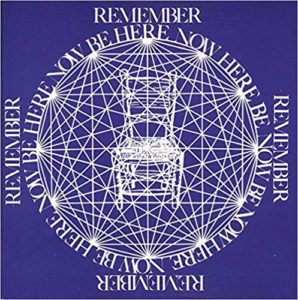
“Be Here Now” by Ram Dass
My realization about the crucial importance of living as thoughtless presence, was especially advanced by the teachings of world renowned spiritual philosopher J. Krishnamurti, that
“Freedom is found in the choiceless awareness of our daily existence and activity.”
~ J. Krishnamurti
Much later I approvingly concurred with the writings and lectures of contemporary author/teacher Eckhart Tolle, which skillfully emphasized “The Power of Now.” (Another memorable book title which became a popular spiritual slogan.)
Probably I best learned about living with a stilled mind by faithfully following for many years my beloved Guruji’s emphatic instructions to “meditate regularly”. Ultimately, after thus meditating regularly, my ‘monkey mind’ finally ceased its ceaseless chatter, permitting me the option of using it or not, and of choosing to enjoy moments of choiceless awareness.
These chosen moments of living with a stilled mind changed my experience and deep understanding of incarnate human life, in previously unprecedented ways. For example, they bestowed new insight into Patanjali’s root aphorism that
“Yoga is the cessation of mind.”
~ Patanjali’s Yoga Sutras
Also I realized that many people (like French philosopher René Descartes) have mistakenly confused “thinking” with “being”. So I wrote an essay critique of that mistaken belief, to remind us that “being” as Awareness exists and persists perpetually, whether or not we are thinking. (See https://sillysutras.com/cartesian-critique/)
And precious moments of thought-free awareness confirmed and validated spiritual insights from other mystical experiences. For example, they were reminders that human consciousness remains beyond death of human bodies and brains; that consciousness creates brains and subtle thought bodies which inevitably survive death of physical bodies. (See https://sillysutras.com/brains/)
Whereby I observed that most people (like Shakespeare’s Prince Hamlet) mistakenly believe that death of the physical body and brain, ends all consciousness and thought.
Thus Prince Hamlet incorrectly equated physical mortality with timeless Awareness in his famous “To be, or not to be” soliloquy contemplating his possible suicide. (William Shakespeare, Hamlet, Act 3, Scene 1)
And to share this realization about Hamlet’s confused suicide speculations,
I composed this sutra:
“To think or not to think, that is the question.”
~ Ron Rattner, Sutra Sayings
which implies that Being is perpetual, not optional, whereas thinking is optional and does not end on bodily ‘death’; but that paradoxically the less we think, the more we are Being (‘here now’) as perpetual Awareness.
Essential Message of “Be Here Now”.
Through the process of learning to live with a stilled mind in the present moment, I’ve discovered that:
Being is timeless. But thought is time (and space). So, when we egoically think of ourselves merely as entities separate (in space) from each other and Nature, we mistakenly preclude or deter our realization of spiritual Freedom as eternal Being beyond space/time.
Instead, we experience our existence only as an ever impermanent past illusion, or mental mirage, but never NOW. However as we self-identify moment by moment as thoughtless, choiceless awareness, we are Being NOW.
And we learn that
“The more we live moment by moment,
the more momentous our lives;” and that
“When all thoughts cease, we are at peace.”
~ Ron Rattner, Sutra Sayings
Ultimately we discover
“That which is timeless is [only] found NOW”
~ Buddha
Conclusion.
Each of us has a unique karmic history and space/time perspective. So each of us has unique challenges and a unique karmic ‘recipe’ for spiritual opening. But the ‘ingredients’ in every such ‘recipe’ are the same– only proportions differ.
And Presence – ‘being here now’ – is crucially important for everyone, not just for spiritual aspirants. For example, being present is sometimes called being “in the zone” with a stilled or focussed mind. Have you ever noticed how star artists or athletes perform at their highest levels while “in the zone”?
Thus today’s quotations, memoirs and discussion are offered to inspire our ever expanding realization that “life can be found only in the present moment”, and that ultimately the Eternal happiness we all (knowingly or unknowingly) seek is beyond space and time, but paradoxically immanent ever here NOW.
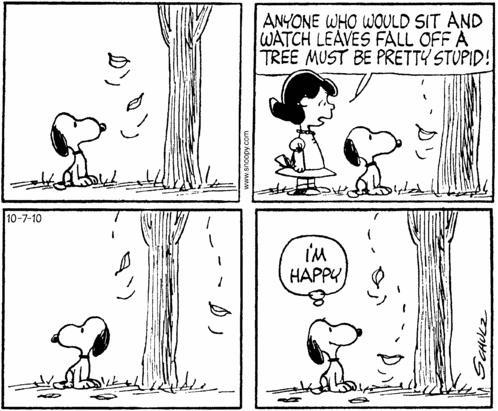
Peanuts by Charles Schulz
Dedication.
May everyone everywhere experience ever expanding happiness by increasingly living moment by moment in precious presence, with ever quieter minds.
Thereby may we all radiate love and joy, which blesses the world, ever NOW.
And so shall it be!
Ron Rattner
Divine Time Release Capsules
“Our destiny is Divinity.”
~ Ron Rattner, Sutra Sayings
“Life is a round trip metaphoric journey,
on which we are destined to return to point of origin.
On return, we learn – we never left.”
~ Ron Rattner, Sutra Sayings

Divine Time Release Capsules
Our destiny is Divinity.
Our human body/minds are like
Divine time release capsules
Of ‘congealed’ consciousness encapsulated by karma –
Enveloped by eons of illusory thoughts, words, and deeds
of imagined separation from others, from Nature
and from our ever immanent inner Essence.
But our optical illusion of separation is being released in time,
As our imagined karmic coatings are inevitably dissolving into
The eternal inner Ocean of Universal Awareness.
So, with ever increasing awareness,
In time we are slowly melting
into the mystery of our inner Divinity,
and merging with our eternal Self.
Thus, beyond time –
Beyond ego’s optical illusion of separation –
Our common destiny is Divinity.
And so shall it Be!
Ron’s audio recitation of “Divine Time Release Capsules”
Ron’s Explanation of “Divine Time Release Capsules”
Dear Friends,
Metaphorically we are fellow spiritual space travelers – like “astronauts on a little spaceship called Earth.”
As seemingly mortal humans we are journeying on a planetary “pale blue dot” through a vast and mysterious space/time universe beyond scientific comprehension. Thus our ultimate destiny as space/time travelers is unknown.
So often we’re fearful, anxious, or stressed about our uncertain future. To help assuage inevitable anxieties, I have posted the foregoing “Divine Time Release Capsule” verses which metaphorically reveal why we never need to fear or worry. They explain that:
Until now, we have mistakenly perceived, believed and behaved as if we are somatically separated from each other and Nature, and from our sole spiritual essence – which is Infinite Awareness. Consequently, to learn our true Reality and deepest non-dual Self identity, our eternal souls have become unconsciously encapsulated in “self-woven karmic cocoons”, in which we are exploring the Cosmos in mortal human bodies on ‘spaceship Earth’.
Our human bodies are like “space/time soul suits” (comparable to astronauts’ space suits or deep sea divers’ suits). As we so explore this seemingly vast space/time universe (while encapsulated in karmic cocoons), we gradually learn that the Cosmos is but an ever impermanent mental illusion (like an ephemeral mirage).
And as we thus realize that time and space are illusory, our karmic cocoons are gradually but inevitably dissolving and melting (like time release capsules), and merging into an Eternal ocean of Infinite Awareness, which is our ultimate destination. Like beautiful butterflies we are evolving as living metaphors for metamorphosis to emerge totally transformed from self woven cocoons, and fated for ascension to a wonderful new Reality.(https://sillysutras.com/butterflies/)
Thus, we are assured to safely survive our mysterious metaphoric journey, because “Our destiny is Divinity” – eternal Reality, beyond this illusory phenomenal world of ever passing appearances.
May these metaphoric time release assurances bring us ever less stress and ever more happiness as we inevitably fulfill our destiny of divine discovery on “spaceship Earth”.
And so it shall be!
Ron Rattner
A Precious Human Life ~ H.H. The 14th Dalai Lama
“The first preliminary practice consists of recognizing and giving value in its right measure to the precious human existence and the extraordinary opportunity that it gives to us to practice Dharma and to develop spiritually.”
~ Kalu Rinpoche – Foundations of Tibetan Buddhism
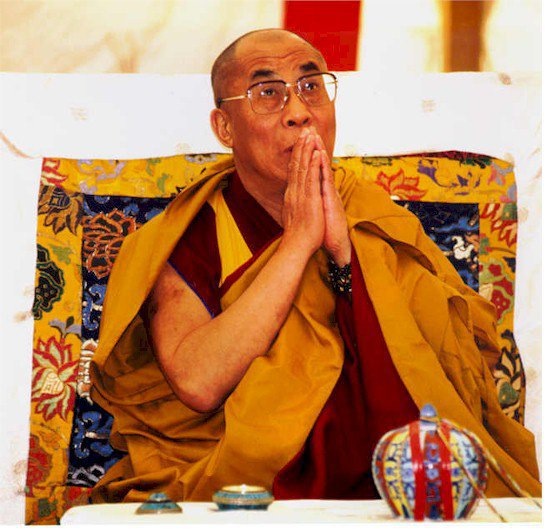
A Precious Human Life
“Everyday, think as you wake up:
Today I am fortunate to have woken up,
I am alive,
I have a precious human life,
I am not going to waste it,
I am going to use all my energies to develop myself.
To expand my heart out to others,
To achieve enlightenment for the benefit of all beings,
I am going to have kind thoughts towards others,
I am not going to get angry, or think badly about others.
I am going to benefit others as much as I can.”
~ H.H. The 14th Dalai Lama
Ron’s Dedication and Comments about “A Precious Human Life”
Dear Friends,
Today is the 83rd birthday anniversary of His Holiness The 14th Dalai Lama of Tibet. In honor of His Holiness, and as a special blessing for all who read his deeply inspiring words, I am privileged to share online His Holiness’s above advice about how we should greet and live each day with mindfulness of our fleeting precious human life.
Before my spiritual awakening, like most other people, I never thought about being a human, rather than some other life-form. But after meeting my Guruji, Shri Dhyanyogi Madhusundandas, I learned that Eastern spiritual paths identify human incarnation on planet Earth as an extraordinarily precious opportunity to evolve – beyond that of any other life-form; that Buddhist and Hindu teachings say that for spiritual evolution it is better to be born human than even in a heavenly realm.
Tibetan Buddhist teachings especially helped me realize that human birth is amazingly precious and rare. They persuaded me that, although the not yet experienced effects of mysterious karmic causes and conditions result in unavoidable rebirths, there is no guarantee that we will evolve on rebirth; that we obtain human bodies because of good deeds in former lives, but that without living compassionately and mindfully, with continuing determination to transcend selfish behaviors, we squander an extraordinarily rare chance to evolve spiritually.
In October 1982, in San Francisco, I participated together with hundreds of others in a Kalachakra empowerment given by (now deceased) Tibetan master Kalu Rinpoche. In describing the history and rare significance of that ceremony, Lama Kalu explained that our attendance arose from beneficial causes and conditions so mysteriously and statistically rare as to be well beyond ordinary human comprehension – like Jesus’ metaphor of a camel passing through the eye of a needle. For example, Rinpoche explained that according to the Buddha, obtaining a human birth and following truth teachings is as unlikely as it is for a blind turtle to put its head through a single yoke which is cast on the oceans of this world.
These Tibetan Buddhist Kalachakra teachings deeply impressed upon me the extraordinary preciousness of fleeting human birth, and the utmost importance of our honoring it by living skillfully and mindfully to evolve spiritually.
So I feel especially privileged to share the foregoing crucially important advice from the H.H. Dalai Lama, our contemporary world’s most renowned exemplar of Buddhist teachings.
May these deeply profound teachings inspire us to gratefully and constantly honor our precious human lives by ever expanding our heart of compassion for the benefit of all beings.
And so shall it be!
Ron Rattner
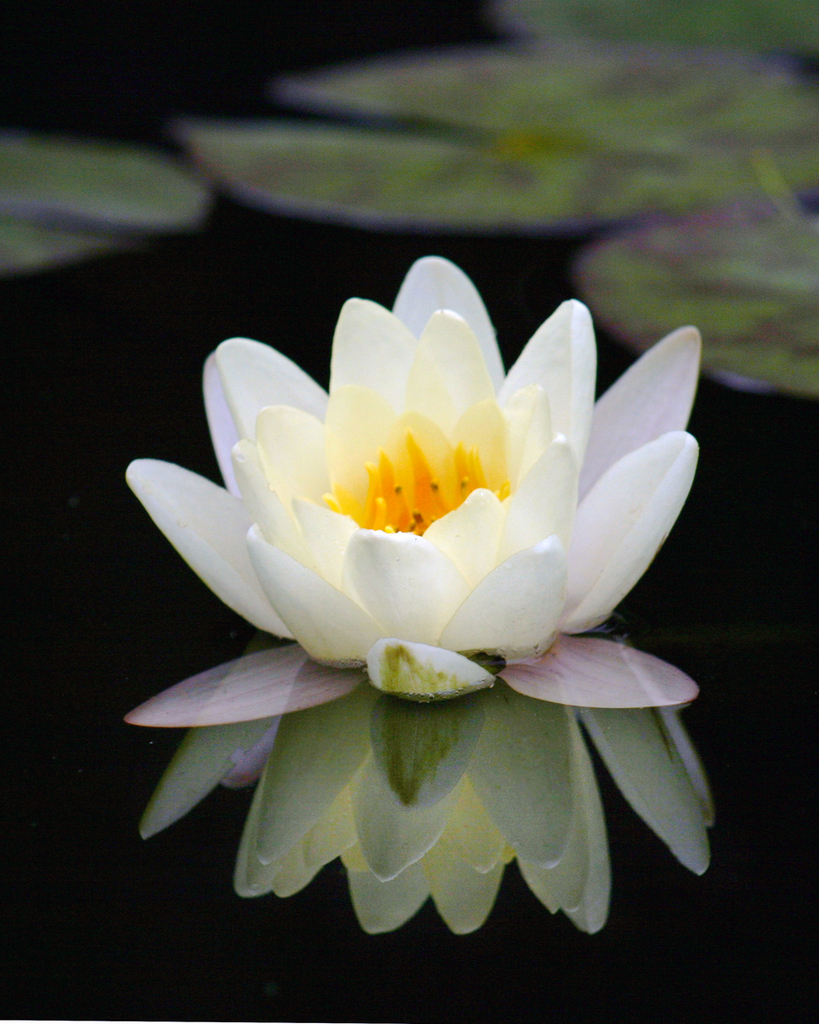
Peace Pilgrim: An Authentic American Sage Who Walked Her Talk
“We are all cells in the body of humanity — all of us, all over the world.
Each one has a contribution to make,
and will know from within what this contribution is,
but no one can find inner peace except by working,
not in a self-centered way, but for the whole human family.”
~ Peace Pilgrim
“I feel a complete protection on my pilgrimage. God is my shield.
There are no accidents in the Divine Plan nor does God leave us unattended. No one walks so safely as those who walk humbly and harmlessly with great love and great faith.”
~ Peace Pilgrim
“Evil cannot be overcome by more evil. Evil can only be overcome by good. It is the lesson of the way of love.”
~ Peace Pilgrim
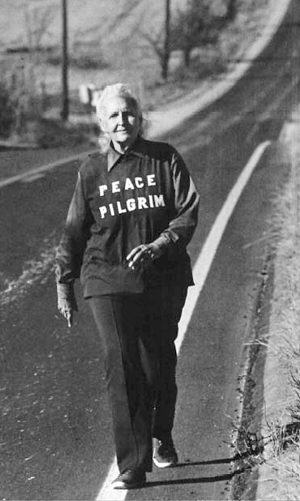
Peace Pilgrim (July 18, 1908 – July 7, 1981)
© James B. Burton – Friends of Peace Pilgrim
Peace Pilgrim: An Authentic American Sage Who Walked Her Talk
Peace Pilgrim was an authentic American spiritual teacher whose life and words have inspired countless people worldwide.
Until 1953 she had lived as Mildred Ryder, an apparently “normal” middle class American woman, without formal religious or spiritual training or discipline. Whereupon after a midlife spiritual awakening period, she took a vow of poverty – renouncing her past history, name, and worldly possessions – and at age forty five embarked from California on an extraordinary coast to coast walking pilgrimage, vowing to “remain a wanderer until mankind has learned the way of peace.”
Thereafter for twenty eight years she walked all over the US well over 25,000 miles, carrying her few possessions in her clothing, which always included an outer blue tunic embroidered with the name “Peace Pilgrim”. True to her vow of poverty she walked penniless and without asking for money, food or lodging, but accepting only nourishment and shelter which was freely offered by kind strangers – and not even accepting rides instead of walking everywhere.
Wherever she went she spontaneously shared deep spiritual wisdom in simple and understandable language. Peace Pilgrim was authentically unique yet universal, transcending religious, secular, or nationalistic bounds. Her life was her message. And she truly walked her talk.
Following her 1981 death in a car collision, an inspiring book about Peace Pilgrim and her teachings was compiled, published, translated into many non-English languages, and distributed worldwide and without charge by a small group of her dedicated friends known as “Friends of Peace Pilgrim”. Due to generous donations, the printed book became a freely distributed world spiritual classic, with numerous re-printings.
Entitled “Peace Pilgrim – Her Life and Work in Her Own Words”, it also became available as an audiobook and as a free pdf download together with much more information about Peace Pilgrim at this website http://www.peacepilgrim.org
Also, “Friends of Peace Pilgrim” have produced and freely distributed an extremely uplifting and excellent one hour documentary video about her life and teachings, titled: “Peace Pilgrim: An American Sage Who Walked Her Talk”. A YouTube video of that film is linked below, and sincerely recommended.
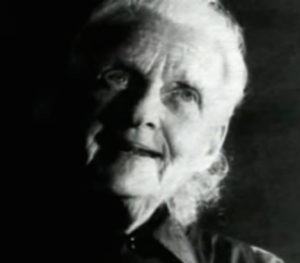
Peace Pilgrim (July 18, 1908 – July 7, 1981)
© Friends of Peace Pilgrim
Ron’s Comments about Peace Pilgrim
After reading the Peace Pilgrim book and watching the video, we may wonder what happened in the 1950’s to Mildred Ryder, an apparently “normal” middle class American woman, that transformed her into a unique sage. How was it that without formal religious or spiritual training or discipline, she became Peace Pilgrim, a saintly ascetic and renunciate spontaneously sharing perennial spiritual truths, in simple understandable language with unconditional love, insight and integrity?
Perhaps, answers to these questions can be found in Peace Pilgrim’s simple yet profound words, as quoted in “Peace Pilgrim – Her Life and Work in Her Own Words”, like these:
“As I looked about the world, so much of it impoverished, I became increasingly uncomfortable about having so much while my brothers and sisters were starving. Finally I had to find another way. The turning point came when, in desperation and out of a very deep seeking for a meaningful way of life, I walked all one night through the woods. I came to a moonlit glade and prayed. I felt a complete willingness, without any reservations, to give my life–to dedicate my life–to service. “Please use me!” I prayed to God. And a great peace came over me.” ~ Pg. 7
“There was a time – when I attained inner peace – when I died, utterly died to myself. I have since renounced my previous identity. I can see no reason to dwell upon my past, it is dead and should not be resurrected. Don’t inquire of me – ask me about my message. It is not important to remember the messenger, just remember the message.” ~ Pg. 126
“Intellectually I touched God many times as truth and emotionally I touched God as love. I touched God as goodness. I touched God as kindness. It came to me that God is a creative force, a motivating power, an over-all intelligence, an ever-present, all pervading spirit — which binds everything in the universe together and gives life to everything. That brought God close. I could not be where God is not. You are within God. God is within you.” ~ Pg. 2
“When love fills your life all limitations are gone. The medicine this sick world needs so badly is love.” ~ Pg. 12
“Of course, I love everyone I meet. How could I fail to! Within everyone is the spark of God. I am not concerned with racial or ethnic background or the color of one’s skin; all people look to me like shining lights! I see in all creatures the reflections of God. All people are my kinfolk – people to me are beautiful!” ~ Pg. 50
“If you don’t know what God’s guidance for your life is, you might try seeking in receptive silence. I used to walk receptive and silent amidst the beauties of nature. Wonderful insights would come to me which I then put into practice in my life.” ~ Pg. 76
“When you find peace within yourself, you become the kind of person who can live at peace with others. Inner peace is not found by staying on the surface of life, or by attempting to escape from life through any means. Inner peace is found by facing life squarely, solving its problems, and delving as far beneath its surface as possible to discover its verities and realities.” ~ Pg. 132
If you are harboring the slightest bitterness toward anyone, or any unkind thoughts of any sort whatever, you must get rid of them quickly. They are not hurting anyone but you. It isn’t enough just to do right things and say right things – you must also think right things before your life can come into harmony.” ~ Pg. 16
“How often are you worrying about the present moment? The present is usually all right. If you’re worrying, you’re either agonizing over the past which you should have forgotten long ago, or else you’re apprehensive over the future which hasn’t even come yet. We tend to skim right over the present moment which is the only moment God gives any of us to live. If you don’t live the present moment, you never get around to living at all. And if you do live the present moment, you tend not to worry. For me, every moment is a new and wonderful opportunity to be of service.” ~ Pg. 64
Video – Peace Pilgrim: An American Sage Who Walked Her Talk
Conclusion
Inspired by Peace Pilgrim’s visionary legacy of nonviolence, peace and love, may each of us in our own way and our own time discover and be guided by that universal light of Love and Truth within all of us.
May we together live as One Love in peace and harmony with Nature.
And so it shall be!
Epilogue
Peace Pilgrim’s twenty eight year peace odyssey occurred during very tumultuous and dangerous times when the world was threatened with a possible World War III nuclear holocaust between the US and Soviet superpowers, while plagued by alleged anti-Communist wars in Korea and Vietnam, and elsewhere. Also, domestically these were dark days of assassinations by their own government of peace proponents President John F. Kennedy, Robert Kennedy, and Martin Luther King, Jr.. Moreover ‘red-scare’ McCarthyism was so rampant that J. Edgar Hoover even regarded Albert Einstein as a security risk.
Peace Pilgrim was adamantly opposed to war and violence, but she primarily taught love and inner peace as the only solutions, because
“Evil cannot be overcome by more evil. Evil can only be overcome by good. It is the lesson of the way of love.”
Yet – like Dr. King – she publicly proclaimed that we were spending more than enough on wars and weapons to comfortably care for every human on planet Earth. So the FBI also had a file on her as a possible ‘subversive’.
Before her passing Peace Pilgrim believed her peace pilgrimage was succeeding because people worldwide feared nuclear annihilation and weren’t insane enough to allow that to happen. Nonetheless, we are again threatened with possible ‘red scare’ nuclear catastrophe as the US Empire is psychopathically spending billions to upgrade an atomic weapons arsenal already more than capable of destroying life on our precious planet.
Consequently, Peace Pilgrim’s message of perennial spiritual and political wisdom may be more crucially relevant to these troubled times than it was when she walked her talk. And her teachings – expressed from deep experience in simple understandable language with unconditional love, insight and integrity – may be more inspiring and important than ever before, imparting crucial ‘critical mass’ spiritual energy.
And so may it be!
Pope Francis’ Call For A Planetary Revolution of Love and Tenderness
“When one realizes that life, even in the middle of so many contradictions, is a gift, that love is the source and the meaning of life, how can they withhold their urge to do good to another fellow being?”
[W]e all need each other, none of us is an island, an autonomous and independent “I,” separated from the other . . . .we can only build the future by standing together, including everyone.. . . .
[E]verything is connected, and we need to restore our connections to a healthy state.
“We have so much to do, and we must do it together.”
~ Pope Francis – 2017 TED Talk
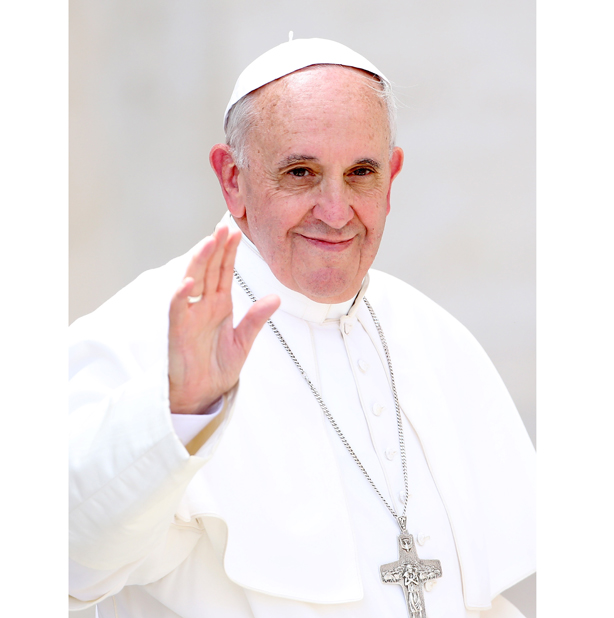
Pope Francis
Ron’s Introduction.
Dear Friends, I am deeply privileged to share with you below an embedded video of a deeply inspiring TED talk, with English subtitles and transcript, given from the Vatican by His Holiness Pope Francis, which applies to everyone everywhere regardless of religious, spiritual, or ethical beliefs.
This TED talk has inspired me more than any other I’ve ever heard. And I urge you to deeply consider the Pope’s message with an open heart and an open mind as he reminds us that we have so much to do, and we must do it together.
May it inspire all of us to become collective participants in a transformative planetary revolution of love and tenderness.
And so shall it be!
Ron Rattner
Pope’s 2017 TED Talk Video.
Pope’s 2017 TED Talk Transcript.
Good evening – or, good morning, I am not sure what time it is there. Regardless of the hour, I am thrilled to be participating in your conference.
I very much like its title – “The Future You” – because, while looking at tomorrow, it invites us to open a dialogue today, to look at the future through a “you.” “The Future You:” the future is made of you’s, it is made of encounters, because life flows through our relations with others. Quite a few years of life have strengthened my conviction that each and everyone’s existence is deeply tied to that of others: life is not time merely passing by, life is about interactions.
As I meet, or lend an ear to those who are sick, to the migrants who face terrible hardships in search of a brighter future, to prison inmates who carry a hell of pain inside their hearts, and to those, many of them young, who cannot find a job, I often find myself wondering: “Why them and not me?” I, myself, was born in a family of migrants; my father, my grandparents, like many other Italians, left for Argentina and met the fate of those who are left with nothing. I could have very well ended up among today’s “discarded” people. And that’s why I always ask myself, deep in my heart: “Why them and not me?”
First and foremost, I would love it if this meeting could help to remind us that we all need each other, none of us is an island, an autonomous and independent “I,” separated from the other, and we can only build the future by standing together, including everyone. We don’t think about it often, but everything is connected, and we need to restore our connections to a healthy state. Even the harsh judgment I hold in my heart against my brother or my sister, the open wound that was never cured, the offense that was never forgiven, the rancor that is only going to hurt me, are all instances of a fight that I carry within me, a flare deep in my heart that needs to be extinguished before it goes up in flames, leaving only ashes behind.
Many of us, nowadays, seem to believe that a happy future is something impossible to achieve. While such concerns must be taken very seriously, they are not invincible. They can be overcome when we don’t lock our door to the outside world. Happiness can only be discovered as a gift of harmony between the whole and each single component. Even science – and you know it better than I do – points to an understanding of reality as a place where every element connects and interacts with everything else.
And this brings me to my second message. How wonderful would it be if the growth of scientific and technological innovation would come along with more equality and social inclusion. How wonderful would it be, while we discover faraway planets, to rediscover the needs of the brothers and sisters orbiting around us. How wonderful would it be if solidarity, this beautiful and, at times, inconvenient word, were not simply reduced to social work, and became, instead, the default attitude in political, economic and scientific choices, as well as in the relationships among individuals, peoples and countries. Only by educating people to a true solidarity will we be able to overcome the “culture of waste,” which doesn’t concern only food and goods but, first and foremost, the people who are cast aside by our techno-economic systems which, without even realizing it, are now putting products at their core, instead of people.
Solidarity is a term that many wish to erase from the dictionary. Solidarity, however, is not an automatic mechanism. It cannot be programmed or controlled. It is a free response born from the heart of each and everyone. Yes, a free response! When one realizes that life, even in the middle of so many contradictions, is a gift, that love is the source and the meaning of life, how can they withhold their urge to do good to another fellow being?
In order to do good, we need memory, we need courage and we need creativity. And I know that TED gathers many creative minds. Yes, love does require a creative, concrete and ingenious attitude. Good intentions and conventional formulas, so often used to appease our conscience, are not enough. Let us help each other, all together, to remember that the other is not a statistic or a number. The other has a face. The “you” is always a real presence, a person to take care of.
There is a parable Jesus told to help us understand the difference between those who’d rather not be bothered and those who take care of the other. I am sure you have heard it before. It is the Parable of the Good Samaritan. When Jesus was asked: “Who is my neighbor?” – namely, “Who should I take care of?” – he told this story, the story of a man who had been assaulted, robbed, beaten and abandoned along a dirt road. Upon seeing him, a priest and a Levite, two very influential people of the time, walked past him without stopping to help. After a while, a Samaritan, a very much despised ethnicity at the time, walked by. Seeing the injured man lying on the ground, he did not ignore him as if he weren’t even there. Instead, he felt compassion for this man, which compelled him to act in a very concrete manner. He poured oil and wine on the wounds of the helpless man, brought him to a hostel and paid out of his pocket for him to be assisted.
The story of the Good Samaritan is the story of today’s humanity. People’s paths are riddled with suffering, as everything is centered around money, and things, instead of people. And often there is this habit, by people who call themselves “respectable,” of not taking care of the others, thus leaving behind thousands of human beings, or entire populations, on the side of the road. Fortunately, there are also those who are creating a new world by taking care of the other, even out of their own pockets. Mother Teresa actually said: “One cannot love, unless it is at their own expense.”
We have so much to do, and we must do it together. But how can we do that with all the evil we breathe every day? Thank God, no system can nullify our desire to open up to the good, to compassion and to our capacity to react against evil, all of which stem from deep within our hearts. Now you might tell me, “Sure, these are beautiful words, but I am not the Good Samaritan, nor Mother Teresa of Calcutta.” On the contrary: we are precious, each and every one of us. Each and every one of us is irreplaceable in the eyes of God. Through the darkness of today’s conflicts, each and every one of us can become a bright candle, a reminder that light will overcome darkness, and never the other way around.
To Christians, the future does have a name, and its name is Hope. Feeling hopeful does not mean to be optimistically naïve and ignore the tragedy humanity is facing. Hope is the virtue of a heart that doesn’t lock itself into darkness, that doesn’t dwell on the past, does not simply get by in the present, but is able to see a tomorrow. Hope is the door that opens onto the future. Hope is a humble, hidden seed of life that, with time, will develop into a large tree. It is like some invisible yeast that allows the whole dough to grow, that brings flavor to all aspects of life. And it can do so much, because a tiny flicker of light that feeds on hope is enough to shatter the shield of darkness. A single individual is enough for hope to exist, and that individual can be you. And then there will be another “you,” and another “you,” and it turns into an “us.” And so, does hope begin when we have an “us?” No. Hope began with one “you.” When there is an “us,” there begins a revolution.
The third message I would like to share today is, indeed, about revolution: the revolution of tenderness. And what is tenderness? It is the love that comes close and becomes real. It is a movement that starts from our heart and reaches the eyes, the ears and the hands. Tenderness means to use our eyes to see the other, our ears to hear the other, to listen to the children, the poor, those who are afraid of the future. To listen also to the silent cry of our common home, of our sick and polluted earth. Tenderness means to use our hands and our heart to comfort the other, to take care of those in need.
Tenderness is the language of the young children, of those who need the other. A child’s love for mom and dad grows through their touch, their gaze, their voice, their tenderness. I like when I hear parents talk to their babies, adapting to the little child, sharing the same level of communication. This is tenderness: being on the same level as the other. God himself descended into Jesus to be on our level. This is the same path the Good Samaritan took. This is the path that Jesus himself took. He lowered himself, he lived his entire human existence practicing the real, concrete language of love.
Yes, tenderness is the path of choice for the strongest, most courageous men and women. Tenderness is not weakness; it is fortitude. It is the path of solidarity, the path of humility. Please, allow me to say it loud and clear: the more powerful you are, the more your actions will have an impact on people, the more responsible you are to act humbly. If you don’t, your power will ruin you, and you will ruin the other. There is a saying in Argentina: “Power is like drinking gin on an empty stomach.” You feel dizzy, you get drunk, you lose your balance, and you will end up hurting yourself and those around you, if you don’t connect your power with humility and tenderness. Through humility and concrete love, on the other hand, power – the highest, the strongest one – becomes a service, a force for good.
The future of humankind isn’t exclusively in the hands of politicians, of great leaders, of big companies. Yes, they do hold an enormous responsibility. But the future is, most of all, in the hands of those people who recognize the other as a “you” and themselves as part of an “us.” We all need each other. And so, please, think of me as well with tenderness, so that I can fulfill the task I have been given for the good of the other, of each and every one, of all of you, of all of us.
Thank you.
